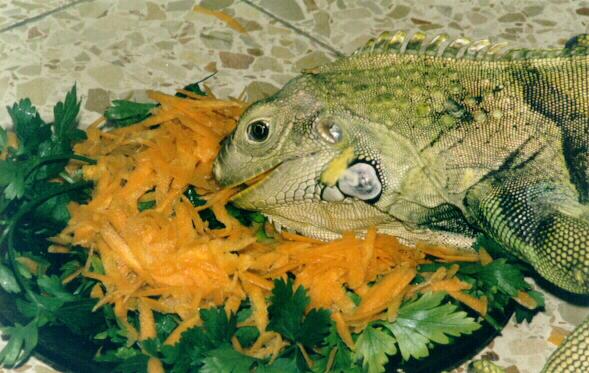Reptiles are of different kinds. Iguanas are just one of those that belong to the largest species of lard family. Iguanas are commonly seen in tropical rain forests, hot deserts and semi-aquatic places. From the forests of North America, Canada and South America to the desert places of South Africa and Madagascar and Island of Galapagos, you will be able to see different types of iguanas.
Iguanas can easily adapt to their environment. Like other reptiles, iguanas are also egg-laying animals and cold-blooded, meaning they cannot produce heat from their body.
Different Iguanas has its unique ability to be able to become accustomed to their habitat. They have their unique skills. Iguanas that dwell in high trees for instance, can jump off the ground without having injuries. In addition, iguanas in Galapagos Island, the Amblyrhynchus cristatus, known as the marine iguana are good swimmer.
The species of iguana differ in their color, size, behavior and their extinction status in the wild. Some iguanas have vivid and bright colors, and others are dull. Most iguanas grows quickly, a hundred times heavier as their normal size as a hatchling in just about 24-30 months. But this would happen if they are given proper care, enough food, and a place with good air circulation and lots of sunlight.
Most iguanas are herbivores while some are omnivore or carnivore depending on their habitat. Terrestrial dwellers are carnivore, they eat mealworms and wax worms while the forest and tree dwellers are herbivores, eats young leaves, flower buds and fruits.

Proper feeding of iguanas is important. Sufficient food intake might lead to bloating, and obesity. In addition, lack of proper diet may also lead to some diseases. Cases like these are very usual so you must be prepared whatever happened to your pet.
If your iguana is showing signs of NSHP or MBD you must bring your pet to a veterinarian. Your iguana is suffering from Nutritional Secondary Hyperparathyrodism or a metabolic bone disease. It doesn’t mean that your iguana is unhealthy if it is oversized or fat. Proper diet must be given. Provide your iguana with a high calcium and low phosphorus diet. Also, always make sure that your pet gets a proper sunlight.
If you’re iguana body seem to be bony and fat and jaws seem to be swollen, your iguana is in the critical stage of NHSP or MBD. This would lead to brittle bones that cause deformities and fractures.
To avoid this to happen give your iguana proper diet, exercise and should maintain a good weight but not becoming overweight. It is also necessary for a fat iguana to obtain the needed calcium or phosphorus ratio for a healthy bone.
How will you know if your Iguana is growing properly?
Hatchling usually measures for about two and a half to three and a half inches snout to vent. When it reaches and emerges from the egg it grows three-quarters of an inch a month for almost three months. The growth of young iguanas slows to a half when it is three months old with a snout to vent of five and three-quarter inches. Iguana reaches for about 9-10 inches stout to vent in just one year.
The growth of your iguana in this stage is very fast. During its twelve to fifteen months, it will grow for about triple of its original length. The growth length of iguana slows radically as the iguana continues to grow for next years. This time give your iguana a proper diet so that it would not get bigger and bigger.
